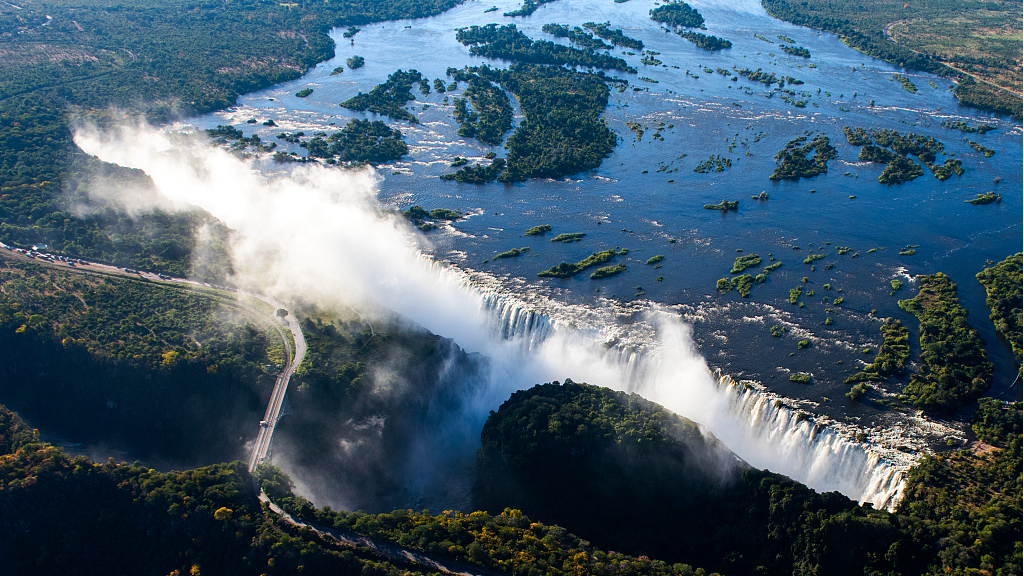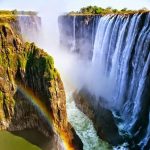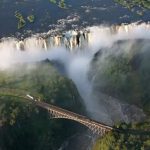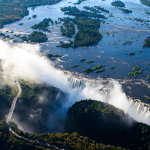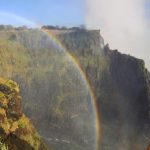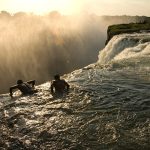Imagine standing on the edge of Victoria Falls, feeling the mist on your face and the thunderous sound of cascading water surrounding you. Now, imagine that this spectacular wonder of nature is at risk. The future of Victoria Falls is a topic of concern and discussion as global conservation efforts strive to protect this extraordinary natural marvel. From exploring sustainable tourism practices to preserving the delicate ecosystem that surrounds it, stakeholders are working together to ensure the longevity and prosperity of Victoria Falls for generations to come.
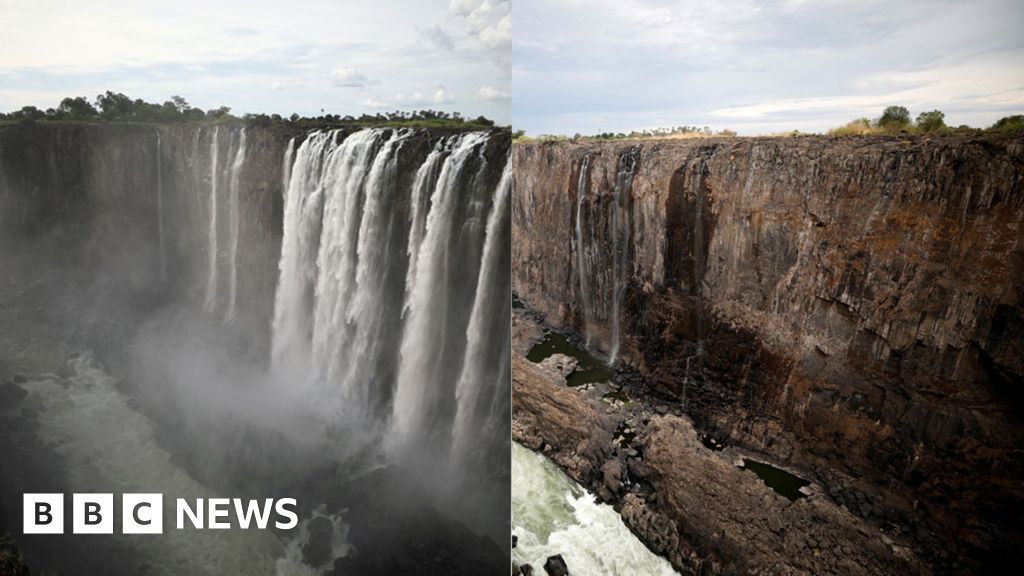
Sustainable Tourism
Introduction to sustainable tourism
Sustainable tourism refers to a concept that aims to minimize the negative impact of tourism on the environment, society, and economy, while maximizing the positive contributions of the industry. It focuses on maintaining the integrity of natural and cultural resources, promoting responsible travel practices, and engaging local communities in tourism development. For Victoria Falls, one of the world’s most iconic natural wonders, sustainable tourism plays a crucial role in securing its future.
Importance of sustainable tourism for Victoria Falls
Victoria Falls, known as “Mosi-oa-Tunya” or “The Smoke that Thunders,” is not only a breathtaking spectacle but also a treasure trove of biodiversity and rich cultural heritage. Its significance goes beyond being a tourist attraction; it is a lifeline for the local communities, who rely on tourism for their livelihoods. Sustainable tourism ensures the preservation of Victoria Falls’ natural and cultural assets, which in turn attracts visitors, generates revenue, and creates job opportunities for the locals. By embracing sustainable practices, Victoria Falls can ensure the longevity of its tourism industry and protect its precious resources for future generations.
Steps taken to promote sustainable tourism
Recognizing the importance of sustainable tourism, Victoria Falls has taken several proactive steps to promote responsible travel practices. These initiatives include:
- Environmental education and awareness: By educating visitors and the local community about the importance of environmental conservation, Victoria Falls strives to foster a sense of responsibility towards protecting the natural and cultural heritage of the region.
- Partnerships with conservation organizations: Collaborating with conservation organizations allows Victoria Falls to implement effective conservation strategies and benefit from their expertise. These partnerships enable the monitoring and preservation of natural habitats, ensuring the long-term sustainability of Victoria Falls.
- Regulating visitor activities: Implementing regulations and guidelines for visitor activities helps manage the impacts of tourism on the ecosystem and ensures the safety of both visitors and the environment.
- Engaging local communities: Involving local communities in tourism development empowers them to participate in decision-making processes, promotes cultural preservation, and creates opportunities for them to benefit from tourism.
The impact of sustainable tourism on the future of Victoria Falls
Sustainable tourism practices have a significant impact on the future of Victoria Falls. By adopting a sustainable approach, the region can:
- Preserve natural resources: Sustainable tourism practices help protect the delicate ecosystems, flora, and fauna surrounding Victoria Falls. By minimizing the impacts of tourism activities, such as pollution and habitat degradation, the region can maintain its biodiversity and natural beauty.
- Support local communities: Sustainable tourism encourages the involvement of local communities in the tourism industry, providing them with employment opportunities, income generation, and capacity building. This, in turn, creates a sense of ownership and ensures the sustainable development of Victoria Falls.
- Enhance visitor experiences: By focusing on sustainable tourism, Victoria Falls can offer visitors unique and authentic experiences. From engaging with local communities and immersing in their cultural traditions to exploring the region’s natural wonders in a responsible manner, sustainable tourism enriches visitors’ experiences and fosters a deep connection with the destination.
Infrastructure Development
Improvements in transportation
Transportation infrastructure plays a vital role in sustainable tourism by providing efficient and environmentally friendly options for visitors to reach Victoria Falls. Initiatives to improve transportation include:
- Promoting sustainable transport modes: Encouraging visitors to use eco-friendly modes of transport, such as bicycles or electric vehicles, minimizes the impact of transportation on the environment. Developing bicycle lanes, electric vehicle charging stations, and public transportation networks further incentivizes sustainable transportation choices.
- Upgrading airport facilities: Enhancing the capacity and quality of airport facilities, including expanding runways and improving terminal buildings, allows for increased visitor arrivals while prioritizing energy efficiency and minimizing carbon emissions.
Upgrading accommodation facilities
As tourism continues to grow, it is essential to upgrade accommodation facilities to meet the increasing demand while minimizing the environmental footprint. Sustainable upgrades include:
- Green building practices: Encouraging the use of sustainable materials, energy-efficient technologies, and renewable energy sources in the construction and operation of accommodation facilities reduces carbon emissions and resource consumption.
- Water conservation: Implementing water-saving measures like rainwater harvesting systems, low-flow fixtures, and wastewater treatment plants helps conserve water resources and reduces the strain on local water supplies.
Development of supporting infrastructure
In addition to transportation and accommodation, supporting infrastructure is crucial for the sustainable development of Victoria Falls. Some key considerations include:
- Waste management systems: Developing efficient waste management systems, such as recycling programs and proper disposal facilities, reduces the impact of tourism-related waste on the environment and ensures a clean and healthy destination.
- Visitor facilities: Investing in well-designed visitor facilities, such as visitor centers, information kiosks, and rest areas, enhances the overall visitor experience while minimizing any negative impacts on the surrounding environment.
Enhancing accessibility for visitors
Improving accessibility is essential for sustainable tourism, as it allows a wider range of visitors to experience Victoria Falls while ensuring responsible visitation. Measures to enhance accessibility include:
- Universal accessibility: Ensuring that facilities and infrastructure are accessible to people with disabilities enables inclusivity and allows everyone to enjoy Victoria Falls’ wonders.
- Sustainable transportation options: Providing shuttle services or promoting carpooling reduces traffic congestion and emissions, making the destination more accessible for visitors while minimizing the impact on the environment.
Balancing infrastructure development with environmental conservation
While infrastructure development is crucial for the growth and sustainability of tourism in Victoria Falls, it must be done in harmony with environmental conservation efforts. Striking a balance between infrastructure development and the preservation of natural resources is key to ensuring the long-term viability of Victoria Falls as a sustainable tourism destination. Proper environmental impact assessments, incorporating sustainable design principles, and regulating construction activities are essential to achieve this balance.
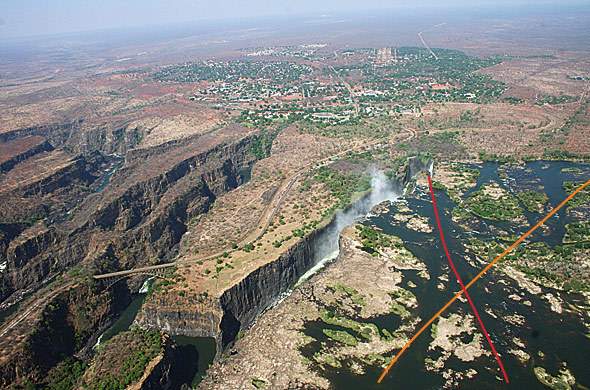
Conservation and Environmental Protection
Preservation of natural habitats and wildlife
Preserving the natural habitats and protecting the diverse wildlife around Victoria Falls is paramount to ensuring the sustainability of the destination. Efforts to support conservation include:
- Protected areas and wildlife management: Establishing and managing protected areas around Victoria Falls safeguards critical habitats for wildlife and encourages responsible tourism practices, such as controlled access and eco-friendly activities.
- Conservation education and research: Educating visitors and the local community about the importance of conservation enhances their understanding and appreciation of the natural environment. Supporting research initiatives also contributes to the conservation and management of the region’s unique ecosystems.
Implementing sustainable waste management practices
Managing waste responsibly is crucial to prevent pollution and protect the pristine environment of Victoria Falls. Sustainable waste management practices include:
- Reduce, reuse, and recycle: Promoting waste reduction strategies, encouraging the reuse of materials, and establishing recycling programs ensures that waste is managed in an environmentally conscious manner, minimizing the impact on landfills and natural surroundings.
- Proper waste disposal: Providing easily accessible waste disposal facilities, including litter bins and recycling stations, helps educate visitors about responsible waste disposal and reduces the likelihood of littering.
Efforts to reduce carbon footprint
Addressing the issue of carbon emissions is essential to combat climate change and make Victoria Falls a more sustainable tourism destination. Efforts to reduce the carbon footprint include:
- Energy-efficient practices: Encouraging accommodation facilities, restaurants, and transportation providers to adopt energy-efficient practices, such as using LED lights, efficient appliances, and renewable energy sources, reduces the carbon footprint of the tourism sector.
- Offsetting carbon emissions: Collaborating with organizations specializing in carbon offset programs allows the tourism industry to invest in sustainable projects that counterbalance the carbon emissions generated by tourism activities.
Promoting eco-friendly activities and practices
Promoting eco-friendly activities and practices encourages visitors to engage with nature responsibly. These initiatives include:
- Nature-based experiences: Offering guided tours, educational programs, and responsible wildlife encounters, such as ethical game drives and bird-watching excursions, allows visitors to appreciate the natural wonders of Victoria Falls while minimizing their impact on the environment.
- Leave no trace principles: Encouraging visitors to follow the principles of “leave no trace” ensures that they leave the destination as they found it, without disturbing the natural environment or leaving any traces of their visit.
Collaboration with local communities for conservation efforts
Engaging local communities in conservation efforts builds a sense of ownership and encourages sustainable practices. Some collaborative initiatives include:
- Community-based conservation projects: Involving local communities in wildlife monitoring, habitat restoration, and anti-poaching efforts empowers them to become stewards of their own natural resources and strengthens the bond between tourism and the community.
- Traditional knowledge and cultural preservation: Recognizing and respecting the traditional knowledge and cultural practices of local communities plays a vital role in preserving the heritage and history of Victoria Falls.
By implementing these conservation and environmental protection measures, Victoria Falls can create a sustainable tourism industry that balances economic development with ecological and cultural preservation.
Diversification of Tourism Offerings
Introduction of new adventure activities
Diversifying tourism offerings beyond the iconic falls experience allows visitors to engage in exciting and sustainable adventure activities. Some new adventure activities include:
- Eco-friendly water sports: Offering activities like kayaking, paddleboarding, or whitewater rafting on the Zambezi River provides visitors with exhilarating experiences while minimizing negative impacts on the ecosystem.
- Hiking and nature trails: Developing well-maintained hiking trails and nature trails allows visitors to explore the surrounding landscapes and appreciate the region’s biodiversity, promoting sustainable tourism experiences.
Expanding wildlife and nature-based experiences
Expanding wildlife and nature-based experiences offers visitors the opportunity to connect with the natural wonders of Victoria Falls while supporting conservation efforts. Some initiatives to expand such experiences include:
- Game drives and safaris: Organizing guided game drives and safaris in nearby national parks and wildlife reserves allows visitors to witness diverse wildlife species in their natural habitats, contributing to conservation efforts through financial support.
- Bird-watching tours: Promoting bird-watching tours and creating birding hotspots enables visitors to observe the rich avian diversity around Victoria Falls, fostering an appreciation for the region’s unique ecology.
Cultural and heritage tourism
Cultural and heritage tourism allows visitors to immerse themselves in the rich history and vibrant traditions of Victoria Falls. Initiatives to promote cultural and heritage tourism include:
- Traditional village experiences: Offering guided tours to local villages provides visitors with the opportunity to interact with the indigenous communities, learn about their cultural heritage, and support local artisans.
- Cultural festivals and events: Organizing cultural festivals, craft markets, and heritage celebrations provides a platform for local communities to showcase their traditional arts, crafts, music, and dance, enriching the overall visitor experience.
Promotion of local arts, crafts, and cuisine
Highlighting the unique arts, crafts, and cuisine of the region promotes sustainable livelihoods for local artisans and enhances the cultural experience for visitors. Initiatives to promote local arts, crafts, and cuisine include:
- Artisan markets: Establishing dedicated markets for local artisans to sell their handcrafted products enables visitors to purchase authentic souvenirs while supporting the local economy.
- Culinary experiences: Showcasing local cuisine through restaurants, cooking classes, and food-focused tours offers visitors a taste of the region while fostering the preservation of traditional culinary practices.
Encouraging off-peak tourism and new visitor markets
Promoting off-peak tourism and attracting new visitor markets help alleviate the pressure on the destination during peak seasons and ensure the sustainability of Victoria Falls. Initiatives to encourage off-peak tourism include:
- Seasonal promotions and discounts: Offering incentives, such as discounted rates or special packages, during off-peak seasons encourages visitors to explore Victoria Falls at quieter times, balancing the flow of tourists throughout the year.
- Targeting niche markets: Identifying and targeting niche markets, such as adventure enthusiasts, nature photographers, or cultural enthusiasts, allows Victoria Falls to attract a diverse range of visitors and tap into new tourism sectors.
By diversifying tourism offerings, Victoria Falls can create sustainable tourism experiences that cater to a wide range of interests, ensuring visitor satisfaction and long-term viability.

Community Empowerment and Socio-economic Development
Engaging local communities in tourism
Engaging local communities in tourism initiatives fosters a sense of ownership, pride, and empowerment among the residents of Victoria Falls. Some initiatives to engage local communities include:
- Capacity building and training programs: Providing training and capacity building programs equips local residents with the skills and knowledge needed to participate in various tourism-related activities, such as tour guiding, hospitality, and craft-making.
- Community-based tourism enterprises: Encouraging the establishment of community-based tourism enterprises, such as homestays, cultural tours, or locally-run accommodations, ensures that the local community directly benefits from tourism revenues and retains control over their resources.
Training and capacity building initiatives
Investing in training and capacity building initiatives uplifts the local workforce and equips them with the necessary skills to participate in the tourism industry. Some training and capacity building initiatives include:
- Hospitality training: Providing training programs focused on customer service, hospitality management, and sustainable tourism practices enhances the quality of service offered to visitors and boosts the overall tourism experience.
- Tourism entrepreneurship: Offering training and mentorship programs for aspiring tourism entrepreneurs helps them develop business acumen, access funding, and establish sustainable ventures in the tourism sector.
Promoting entrepreneurship and small businesses
Empowering local entrepreneurs and small businesses contributes to socio-economic development and creates a more inclusive tourism industry. Initiatives to promote entrepreneurship and small businesses include:
- Microfinance and grants: Providing access to microfinance loans and grants enables local entrepreneurs to start or expand their tourism-related businesses, stimulating economic growth and diversification.
- Business incubators and support programs: Establishing business incubators and support programs offers mentorship, networking opportunities, and business development resources to budding entrepreneurs, fostering their success in the tourism sector.
Improving local infrastructure and services
Investments in local infrastructure and services enhance the quality of life for local communities and contribute to the overall attractiveness of Victoria Falls as a destination. Some key infrastructure improvements include:
- Healthcare facilities: Ensuring the availability of quality healthcare facilities and services for both residents and visitors promotes well-being and safety, enhancing the overall visitor experience.
- Education and vocational training: Investing in education and vocational training institutions equips residents with a broad range of skills and knowledge, creating a competent workforce capable of meeting the demands of the tourism industry.
The socio-economic impact of tourism on local communities
Sustainable tourism has a significant socio-economic impact on local communities in Victoria Falls. The benefits include:
- Income generation and employment opportunities: Tourism provides a source of income and employment for local residents, creating livelihood opportunities and reducing poverty.
- Infrastructure development: Tourism revenues contribute to improving local infrastructure, including roads, utilities, and public services, benefiting both residents and visitors alike.
- Cultural preservation: The tourism industry often encourages the preservation of cultural heritage, traditions, and practices, which fosters a sense of identity and pride among local communities.
- Social empowerment: Tourism empowers local communities by giving them a voice and allowing them to actively participate in decision-making processes related to tourism development.
By prioritizing community empowerment and socio-economic development, Victoria Falls ensures that the benefits of tourism are shared among all residents, creating a more inclusive and sustainable destination.
Public-Private Partnerships
Collaboration between government and private sector
Effective collaboration between government authorities and the private sector is crucial for sustainable tourism development in Victoria Falls. Key features of public-private partnerships include:
- Policy development and enforcement: Government authorities and private sector stakeholders work together to develop and enforce policies that promote sustainable tourism practices, environmental conservation, and community development.
- Resource allocation and investment: Public-private partnerships facilitate the allocation of resources and investment in infrastructure projects, marketing campaigns, and conservation initiatives, ensuring the sustainable growth of the tourism industry.
Attracting foreign direct investment
Foreign direct investment plays a vital role in supporting the development of tourism infrastructure and services. Strategies to attract foreign direct investment include:
- Investment incentives: Offering incentives, such as tax breaks, simplified bureaucratic processes, or land allocations, encourages foreign investors to contribute to the development of Victoria Falls’ tourism industry.
- Public-private investment forums: Organizing investment forums and conferences creates a platform for government officials, private investors, and stakeholders to discuss investment opportunities, negotiate partnerships, and showcase Victoria Falls’ potential.
Joint initiatives for infrastructure development
Collaborative initiatives between the government and private sector drive infrastructure development projects that align with sustainable tourism goals. Joint initiatives for infrastructure development include:
- Public-private financing models: Embracing innovative financing models, such as public-private partnerships or Build-Operate-Transfer arrangements, allows for the efficient and sustainable development of infrastructure projects, such as airports, roads, and utilities.
- Destination management planning: Conducting collaborative destination management planning ensures that infrastructure development aligns with environmental, social, and cultural sustainability goals, creating a cohesive and well-planned destination.
Marketing and promoting Victoria Falls internationally
Efficient marketing and promotion strategies are vital for attracting international visitors and positioning Victoria Falls as a sustainable tourism destination. Key marketing initiatives include:
- Brand development: Developing a strong and recognizable brand identity for Victoria Falls helps differentiate it from other destinations, emphasizing its unique natural and cultural attributes and its commitment to sustainability.
- Digital marketing and online presence: Harnessing the power of digital platforms, social media, and online travel agencies enables efficient and targeted marketing campaigns, reaching a global audience and driving visitor interest.
Ensuring sustainable development through partnerships
Public-private partnerships ensure the long-term sustainability of Victoria Falls by fostering collaboration, resource sharing, and integration of sustainable practices. Through these partnerships, Victoria Falls can achieve:
- Shared responsibility: Joint initiatives foster a shared responsibility among various stakeholders to protect and promote the sustainable development of Victoria Falls, ensuring that all parties contribute to sustainable tourism practices.
- Knowledge exchange and capacity building: Collaboration creates opportunities for knowledge exchange and capacity building, allowing for the transfer of best practices, innovation, and expertise from both the public and private sectors.
By leveraging public-private partnerships, Victoria Falls can optimize the resources, expertise, and investments required to create a sustainable tourism industry that supports economic growth, environmental conservation, and community development.
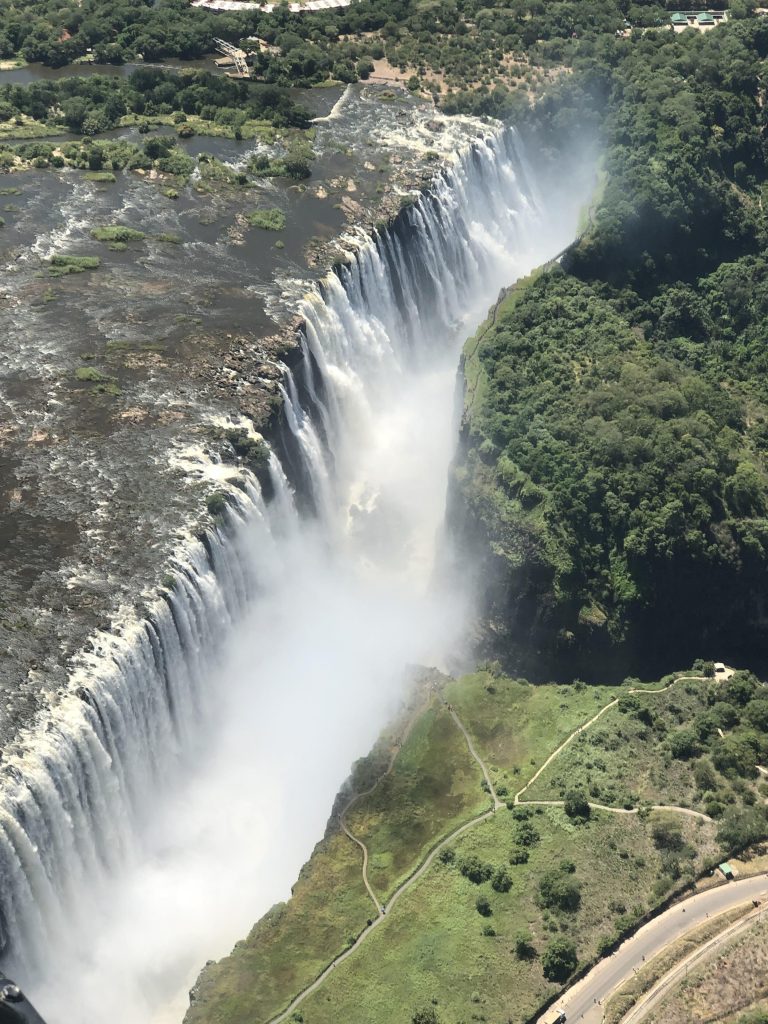
Tourism Technology and Innovation
Integration of digital platforms for visitor experience
Technology plays an increasingly vital role in enhancing the visitor experience in Victoria Falls. Integrating digital platforms allows for:
- Online booking systems: Offering online booking systems for accommodation, activities, and transportation streamlines the planning process for visitors, making their experience more convenient and efficient.
- Mobile applications and virtual tours: Developing mobile applications and virtual tours provides visitors with interactive and immersive experiences, allowing them to explore Victoria Falls and its attractions digitally.
Utilizing data analytics for tourism management
Data analytics provide valuable insights for effective tourism management and decision-making. Utilizing data analytics allows Victoria Falls to:
- Visitor behavior analysis: By analyzing visitor data, including demographics, spending patterns, and preferences, tourism authorities can tailor marketing strategies and customize offerings to meet visitor needs effectively.
- Traffic and crowd management: Monitoring visitor flows and analyzing crowd patterns helps manage congestion and optimize resource allocation, ensuring a smooth and enjoyable visitor experience while minimizing negative impacts on the destination.
Implementation of smart tourism initiatives
Smart tourism initiatives leverage technology to create more efficient, sustainable, and personalized tourism experiences. Implementation of smart tourism initiatives includes:
- Smart destination management systems: Using integrated systems and sensors allows for real-time monitoring of visitor numbers, energy consumption, and transportation networks, enabling more efficient resource management and enhancing the overall visitor experience.
- Smart signage and navigation: Implementing digital signage, interactive maps, and navigation systems simplifies wayfinding for visitors, reducing congestion and ensuring a seamless exploration of the destination.
Emerging trends in tourism technology
As technology continues to evolve, emerging trends in tourism technology offer exciting opportunities for the future of Victoria Falls. Some emerging trends include:
- Virtual reality and augmented reality experiences: By integrating virtual reality and augmented reality technologies, Victoria Falls can provide immersive experiences that allow visitors to explore the destination virtually, igniting their curiosity and enticing them to visit in person.
- Artificial intelligence and chatbots: Harnessing artificial intelligence and chatbots enables personalized and instant communication with visitors, providing them with real-time information, recommendations, and support throughout their journey.
Enhancing efficiency and visitor satisfaction through innovation
Innovation in tourism technology improves efficiency, visitor satisfaction, and resource management, contributing to the long-term sustainability of Victoria Falls. By embracing innovative solutions, the destination can:
- Streamline operations: Automation and digitalization of processes, such as ticketing systems, visitor information, and payment methods, streamline operations, reduce queue times, and enhance visitor satisfaction.
- Personalize visitor experiences: Utilizing technology to gather visitor preferences and behavior enables personalized recommendations, customized itineraries, and tailored experiences, ensuring a memorable and enjoyable visit to Victoria Falls.
By leveraging tourism technology and embracing innovation, Victoria Falls can enhance its competitiveness, provide unique experiences, and ensure the sustainability of its tourism industry in the face of technological advancements.
Mitigating Climate Change Impacts
Understanding the potential impacts of climate change
Climate change poses significant threats to the ecosystems and natural wonders of Victoria Falls. Understanding the potential impacts allows for effective mitigation and adaptation strategies. Key potential impacts of climate change include:
- Water availability and flow: Changes in rainfall patterns and increased temperatures can impact water availability and flow rates at Victoria Falls, potentially affecting the spectacular cascade and the overall beauty of the site.
- Biodiversity loss: The changing climate can disrupt ecosystems, leading to the loss of plant and animal species, with cascading effects on the region’s biodiversity and the overall health of the ecosystem.
Adapting and implementing climate resilience strategies
To mitigate the impacts of climate change, Victoria Falls must adapt and implement climate resilience strategies. These strategies include:
- Climate-proof infrastructure: Designing infrastructure to withstand extreme weather events, such as floods or droughts, ensures their longevity and reduces the need for frequent repairs or reconstruction.
- Ecosystem restoration and conservation: Restoring and conserving ecosystems, such as forests and wetlands, creates natural buffers against climate change, helps regulate water flow, and maintains the overall health of the environment.
Conserving water resources
Water is a precious resource, and managing it sustainably is vital for the future of Victoria Falls. Measures to conserve water resources include:
- Water-efficient practices: Encouraging water-efficient practices in accommodation facilities, restaurants, and tourist activities, such as installing low-flow fixtures, promotes responsible water consumption and minimizes wastage.
- Water harvesting and storage: Implementing rainwater harvesting systems and storage facilities allows for the collection and utilization of rainwater, reducing reliance on groundwater sources.
Renewable energy integration
Transitioning to renewable energy sources helps reduce the carbon footprint associated with tourism activities and addresses the impacts of climate change. Initiatives for renewable energy integration include:
- Solar power installations: Promoting the use of solar panels for power generation in accommodation facilities, public spaces, and transportation vehicles reduces the reliance on fossil fuels and minimizes greenhouse gas emissions.
- Energy efficiency programs: Implementing energy efficiency programs helps reduce energy consumption, lowers operating costs, and contributes to the overall sustainability of Victoria Falls.
Addressing the threats of climate change on the falls
To address the threats climate change poses to Victoria Falls, proactive measures are crucial. Some key initiatives include:
- Climate monitoring and research: Monitoring climate data and initiating research programs allows for a better understanding of the changing climate and its impacts on Victoria Falls, facilitating the development of targeted adaptation and mitigation strategies.
- Early warning systems: Establishing early warning systems for extreme weather events, such as flash floods, ensures the safety of visitors and provides sufficient time for evacuation or preparation.
By mitigating climate change impacts and investing in climate resilience, Victoria Falls can adapt to the changing climate and safeguard its natural wonders for future generations.

Collaborative Conservation Efforts
International collaborations for conservation
Collaborating with international conservation organizations and institutions enhances Victoria Falls’ conservation efforts. International collaborations provide:
- Technical expertise: Partnering with international organizations brings technical expertise, knowledge exchange, and best practices to Victoria Falls, supporting the implementation of effective conservation strategies.
- Funding opportunities: International collaborations increase access to funding opportunities for conservation projects, enabling the implementation of large-scale initiatives that might otherwise be challenging to finance.
Sharing best practices in sustainable tourism
Sharing best practices in sustainable tourism allows Victoria Falls to learn from other successful destinations and replicate effective strategies. Benefits of sharing best practices include:
- Knowledge transfer: Sharing best practices fosters knowledge exchange and facilitates the transfer of successful strategies, ensuring that Victoria Falls can benefit from the experiences of other destinations.
- Continuous improvement: By learning from other destinations, Victoria Falls can continuously evaluate and improve its sustainability initiatives, enhancing its position as a leading sustainable tourism destination.
Joint research and conservation projects
Collaborative research and conservation projects provide valuable insights for the planning and implementation of sustainable tourism initiatives. Joint research and conservation projects offer:
- Scientific data and analysis: Joint projects contribute to the collection of scientific data, monitoring efforts, and impact assessments, allowing for evidence-based decisions and effective management of Victoria Falls’ natural resources.
- Collaborative problem-solving: Collaboration on research and conservation projects encourages the sharing of innovative ideas, fostering collaborative problem-solving approaches to address the challenges faced by Victoria Falls.
Preserving the Zambezi River ecosystem
Preserving the Zambezi River ecosystem is essential for the overall health and sustainability of Victoria Falls. Initiatives for preserving the Zambezi River ecosystem include:
- River conservation programs: Collaborating with regional stakeholders and organizations dedicated to river conservation enables the implementation of programs that protect water quality, aquatic life, and the biodiversity of the Zambezi River.
- Anti-poaching efforts: Addressing illegal fishing and poaching activities is crucial for protecting the river’s biodiversity. Collaborating with law enforcement agencies and local communities helps combat these threats effectively.
Ensuring long-term environmental sustainability
Long-term environmental sustainability can only be achieved through collaborative conservation efforts. By working together, Victoria Falls can:
- Ensure continuity of conservation initiatives: Collaboration ensures that conservation efforts continue beyond individual projects or initiatives, creating a lasting impact on the environment and contributing to the long-term sustainability of Victoria Falls.
- Promote global awareness: Collaborative conservation efforts can raise global awareness about the importance of preserving natural wonders like Victoria Falls, inspiring other destinations to adopt sustainable practices and protect their own unique ecosystems.
By fostering collaborative conservation efforts, Victoria Falls can leverage collective expertise, resources, and international support to preserve its natural assets and maintain long-term environmental sustainability.
Governmental Policies and Regulations
National policies supporting sustainable tourism
Establishing national policies that support sustainable tourism is crucial for the long-term viability of Victoria Falls. Key features of national policies supporting sustainable tourism include:
- Environmental protection: Incorporating environmental protection measures, such as conservation regulations, protected area management, and biodiversity preservation, ensures that the natural resources of Victoria Falls are safeguarded.
- Community involvement: Involving local communities in policy development processes empowers them to contribute to decision-making, ensuring that their interests and concerns are considered in tourism planning and development.
Ensuring responsible tourism practices
Regulating responsible tourism practices is essential for minimizing negative impacts on Victoria Falls and its surrounding ecosystems. Measures to ensure responsible tourism practices include:
- Visitor code of conduct: Establishing a visitor code of conduct promotes responsible behavior among visitors, emphasizing the importance of respecting the environment, cultural heritage, and local communities.
- Monitoring and enforcement: Implementing monitoring systems and enforcing regulations allows authorities to identify and address any non-compliance issues, ensuring that tourism activities adhere to responsible and sustainable practices.
Regulating visitor numbers and activities
Regulating visitor numbers and activities is crucial for protecting the delicate ecosystem of Victoria Falls. Visitor management measures include:
- Carrying capacity assessments: Conducting carrying capacity assessments helps determine the maximum number of visitors that can be accommodated without causing significant harm to the environment, ensuring a sustainable balance between tourism and conservation.
- Permit systems and controlled access: Establishing permit systems and controlled access areas helps manage visitor flows, preventing overcrowding and ensuring that sensitive areas are protected from excessive human impact.
Promoting compliance with environmental standards
Promoting compliance with environmental standards ensures that tourism activities in Victoria Falls adhere to sustainable practices and minimize negative impacts. Initiatives to promote compliance include:
- Certification programs: Encouraging tourism operators to obtain sustainability certifications, such as eco-labels or environmental management certifications, provides assurance to visitors that the businesses operate in an environmentally responsible manner.
- Awareness campaigns: Conducting awareness campaigns for tourism operators and visitors enables the dissemination of information about environmental standards, encouraging compliance and sustainable decision-making.
Reviewing and updating policies for future sustainability
Regularly reviewing and updating policies is essential to adapt to changing circumstances and ensure the future sustainability of Victoria Falls. The review and update process includes:
- Stakeholder consultations: Engaging stakeholders, including tourism operators, local communities, and conservation organizations, in policy review processes provides valuable insights and ensures that policies align with the needs and aspirations of all stakeholders.
- Integration of emerging trends: Incorporating emerging trends, research findings, and best practices in policy development ensures that Victoria Falls remains at the forefront of sustainable tourism initiatives and adapts to changing tourism dynamics.
By implementing and regulating sustainable tourism policies, Victoria Falls can create a framework that supports responsible and sustainable tourism practices, protects its natural and cultural heritage, and secures the future of the destination.

